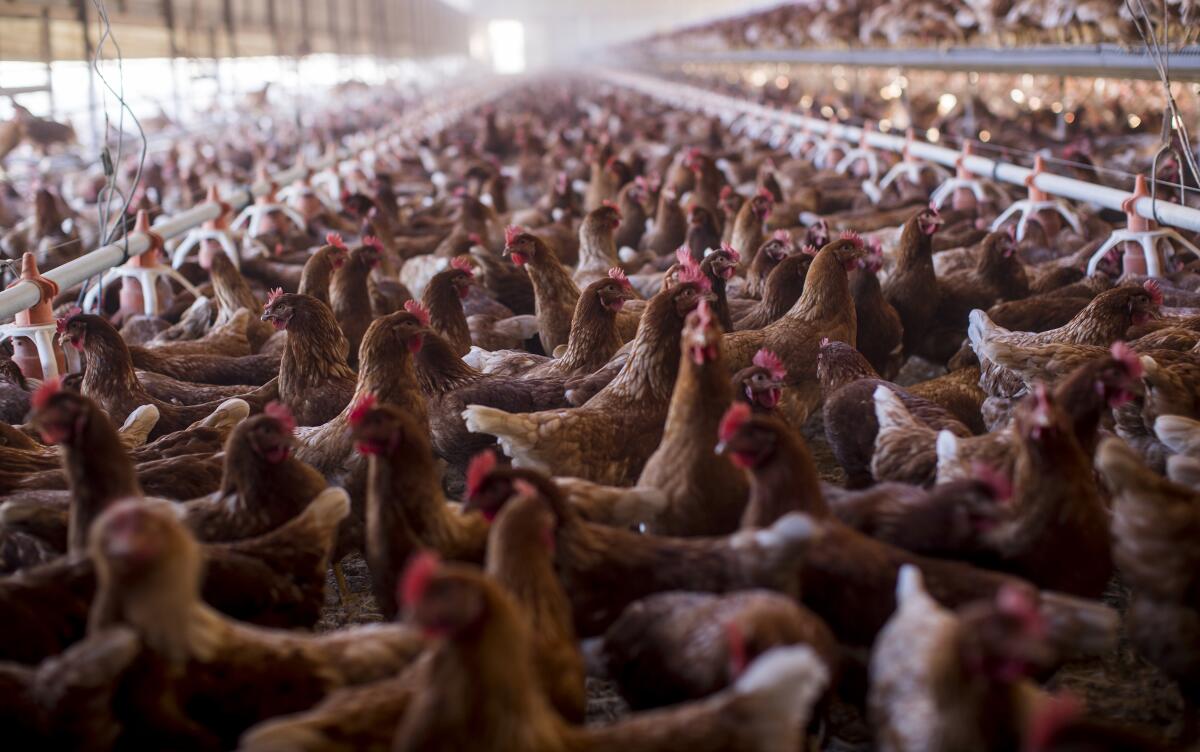Letters to the Editor: ‘Euthanized’? What happens to chickens with bird flu is a lot worse

To the editor: The Times’ recent article on skyrocketing egg prices claims that once farmers detect the bird flu virus in chickens, “flocks are euthanized.”
To “euthanize” means to give a humane death. To understand how these flocks actually die, you might consider the 2022 Associated Press article, “Bird flu’s grisly question: how to kill millions of poultry.”
The AP piece reported that farmers use a variety of methods to kill chickens in flocks affected by bird flu. Whether sprayed by firefighting foam (which suffocates them) or locked in barns after farmers stop airflow (cutting off oxygen over a matter of hours), these chickens do not die painless deaths.
I encourage The Times to use an accurate term for these killings, because “euthanize” falsely informs readers that these animals are killed in a humane manner.
Merete Rietveld, Los Angeles
..
To the editor: The “law of unintended consequences” plays into this story.
In 2018, California voters in their wisdom passed a ballot initiative outlawing eggs produced by hens in cages. This means that to a large extent, California is a separate, isolated country when it comes to egg production.
Nationwide, bird flu has resulted in the loss of 10.2 million hens out of a population of 379 million in the last month, according to the article. However, egg prices in Pennsylvania today are around $4.50 a dozen, about half of California’s price.
David Schaffner, Arroyo Grande, Calif.
The writer is a professor emeritus of agribusiness at Cal Poly San Luis Obispo.
..
To the editor: Last week, I bought a dozen eggs at Trader Joe’s for $2.99. I don’t buy or eat eggs regularly, but that has been the price at Trader Joe’s for as long as I’ve noticed.
I wonder where the people who determine the average for the U.S. Department of Agriculture shop.
Henry A. Hespenheide, Hermosa Beach






